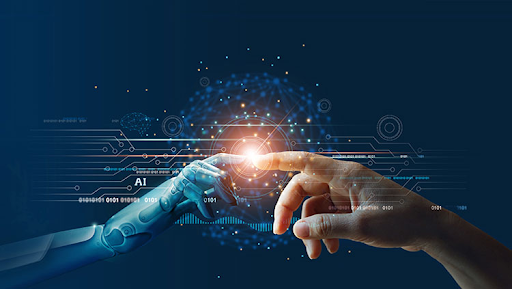
The Uncanny Valley is a concept in aesthetics that describes the relationship between an object's resemblance to a human being and our emotional reaction to it. The uncanny valley is sometimes referred to as "the twilight area" between reality and unreality. It is a well-known phenomenon in the art industry, where people respond emotionally to films, paintings, or videos.
Inconsistencies with realism
The uncanny valley effect has been studied in humans and animals. Researchers found that decreasing the realism of people or objects can elicit cold and unsettling feelings. Although the exact mechanism of the uncanny Valley is still unknown, their study suggests that familiarity plays a role. The importance of perceptual narrowing was also highlighted in the study. You can read more about this intriguing effect.
Researchers determined the degree of realisticity a human face, or animal, possessed by comparing it against three different representations. They compared each representation's realism to three different levels: warm, hostile, and recognizable. The statistical significance of these results was increased when the standardized Gammas were considered. People who knew only one of these representations had a higher degree of realism.

Emotional response to artificial figures
The emotional response to artificial figures is a natural human reaction. While the human face is universally recognisable, facial expressions vary across cultures. Ekman built a model of human faces that can be recognized by computers. In this way, he was able to determine what people really felt when looking at an artificial figure. Emotions are often associated with particular ideas or patterns.
Triggers
The term "uncanny" is used to describe a phenomenon in which an object or scene seems to be similar to a human face but has certain characteristics that make it different from that face. It may cause feelings such as unease, eerieness and coldness depending upon the stimulus. These are similar to what a child feels when he sees an actual dead body. This psychological phenomenon is not limited to humans.
Mori developed the theory to explain why humans can react negatively to robots in different social situations. The basic idea behind the theory is that robots are perceived as anthropomorphic by humans. Humans have a lower emotional valence than robots, so we're prone to fear or even react violently when we see one. Despite this, researchers have made numerous attempts to explain why humans have negative reactions to nonhuman objects.
The evidence
The uncanny valley phenomenon is not a unique phenomenon. We are more likely to see the larger goggle eye when we view a human face. However, an avatar may make us feel more comfortable than a human face, even though it is clearly cartoony. This phenomenon can be attributed to differences in cognitive and affective processes. This phenomenon can also be explained through cultural artifacts or generational factors.

Many studies have shown negative reactions to very realistic robots, which is what's known as the uncanny Valley. This is because synthetic characters fail to meet the standard of what constitutes a "human." When characters do not match the notion of being "human", we feel uneasy and uncomfortable. These negative feelings are believed stem from our evolutionary heritage. This is why we are vulnerable to this phenomenon.
FAQ
What is the state of the AI industry?
The AI industry is growing at an unprecedented rate. Over 50 billion devices will be connected to the internet by 2020, according to estimates. This will allow us all to access AI technology on our laptops, tablets, phones, and smartphones.
This will also mean that businesses will need to adapt to this shift in order to stay competitive. Companies that don't adapt to this shift risk losing customers.
This begs the question: What kind of business model do you think you would use to make these opportunities work for you? What if people uploaded their data to a platform and were able to connect with other users? You might also offer services such as voice recognition or image recognition.
Whatever you decide to do, make sure that you think carefully about how you could position yourself against your competitors. While you won't always win the game, it is possible to win big if your strategy is sound and you keep innovating.
From where did AI develop?
In 1950, Alan Turing proposed a test to determine if intelligent machines could be created. He believed that a machine would be intelligent if it could fool someone into believing they were communicating with another human.
John McCarthy later took up the idea and wrote an essay titled "Can Machines Think?" McCarthy wrote an essay entitled "Can machines think?" in 1956. He described the difficulties faced by AI researchers and offered some solutions.
What does AI look like today?
Artificial intelligence (AI) is an umbrella term for machine learning, natural language processing, robotics, autonomous agents, neural networks, expert systems, etc. It is also called smart machines.
The first computer programs were written by Alan Turing in 1950. He was curious about whether computers could think. In his paper "Computing Machinery and Intelligence," he proposed a test for artificial intelligence. This test examines whether a computer can converse with a person using a computer program.
John McCarthy in 1956 introduced artificial intelligence. He coined "artificial Intelligence", the term he used to describe it.
Many AI-based technologies exist today. Some are simple and straightforward, while others require more effort. These include voice recognition software and self-driving cars.
There are two major types of AI: statistical and rule-based. Rule-based uses logic in order to make decisions. For example, a bank balance would be calculated as follows: If it has $10 or more, withdraw $5. If it has less than $10, deposit $1. Statistical uses statistics to make decisions. For instance, a weather forecast might look at historical data to predict what will happen next.
How does AI affect the workplace?
It will transform the way that we work. We'll be able to automate repetitive jobs and free employees to focus on higher-value activities.
It will improve customer services and enable businesses to deliver better products.
It will help us predict future trends and potential opportunities.
It will help organizations gain a competitive edge against their competitors.
Companies that fail AI adoption are likely to fall behind.
Are there any potential risks with AI?
Yes. They will always be. Some experts believe that AI poses significant threats to society as a whole. Others argue that AI is necessary and beneficial to improve the quality life.
AI's potential misuse is one of the main concerns. If AI becomes too powerful, it could lead to dangerous outcomes. This includes things like autonomous weapons and robot overlords.
AI could take over jobs. Many fear that AI will replace humans. Others believe that artificial intelligence may allow workers to concentrate on other aspects of the job.
For example, some economists predict that automation may increase productivity while decreasing unemployment.
Who invented AI?
Alan Turing
Turing was created in 1912. His father was a clergyman, and his mother was a nurse. At school, he excelled at mathematics but became depressed after being rejected by Cambridge University. He learned chess after being rejected by Cambridge University. He won numerous tournaments. After World War II, he was employed at Bletchley Park in Britain, where he cracked German codes.
He died on April 5, 1954.
John McCarthy
McCarthy was born in 1928. He was a Princeton University mathematician before joining MIT. There he developed the LISP programming language. He had laid the foundations to modern AI by 1957.
He passed away in 2011.
Statistics
- In the first half of 2017, the company discovered and banned 300,000 terrorist-linked accounts, 95 percent of which were found by non-human, artificially intelligent machines. (builtin.com)
- More than 70 percent of users claim they book trips on their phones, review travel tips, and research local landmarks and restaurants. (builtin.com)
- By using BrainBox AI, commercial buildings can reduce total energy costs by 25% and improves occupant comfort by 60%. (analyticsinsight.net)
- That's as many of us that have been in that AI space would say, it's about 70 or 80 percent of the work. (finra.org)
- While all of it is still what seems like a far way off, the future of this technology presents a Catch-22, able to solve the world's problems and likely to power all the A.I. systems on earth, but also incredibly dangerous in the wrong hands. (forbes.com)
External Links
How To
How to set up Amazon Echo Dot
Amazon Echo Dot is a small device that connects to your Wi-Fi network and allows you to use voice commands to control smart home devices like lights, thermostats, fans, etc. To listen to music, news and sports scores, all you have to do is say "Alexa". You can ask questions, make calls, send messages, add calendar events, play games, read the news, get driving directions, order food from restaurants, find nearby businesses, check traffic conditions, and much more. Bluetooth headphones and Bluetooth speakers (sold separately) can be used to connect the device, so music can be heard throughout the house.
An HDMI cable or wireless adapter can be used to connect your Alexa-enabled TV to your Alexa device. If you want to use your Echo Dot with multiple TVs, just buy one wireless adapter per TV. You can also pair multiple Echos at once, so they work together even if they aren't physically near each other.
These are the steps you need to follow in order to set-up your Echo Dot.
-
Turn off your Echo Dot.
-
You can connect your Echo Dot using the included Ethernet port. Make sure you turn off the power button.
-
Open Alexa on your tablet or smartphone.
-
Select Echo Dot in the list.
-
Select Add New Device.
-
Select Echo Dot (from the drop-down) from the list.
-
Follow the screen instructions.
-
When prompted, type the name you wish to give your Echo Dot.
-
Tap Allow access.
-
Wait until the Echo Dot has successfully connected to your Wi-Fi.
-
For all Echo Dots, repeat this process.
-
Enjoy hands-free convenience